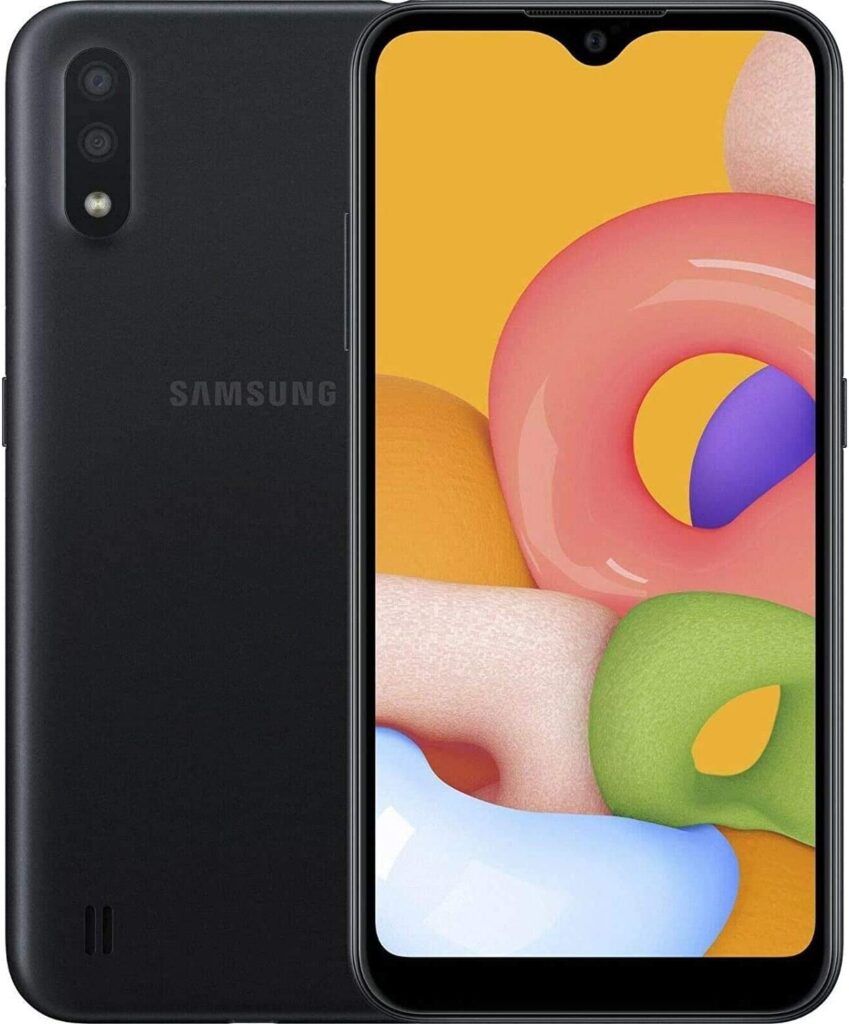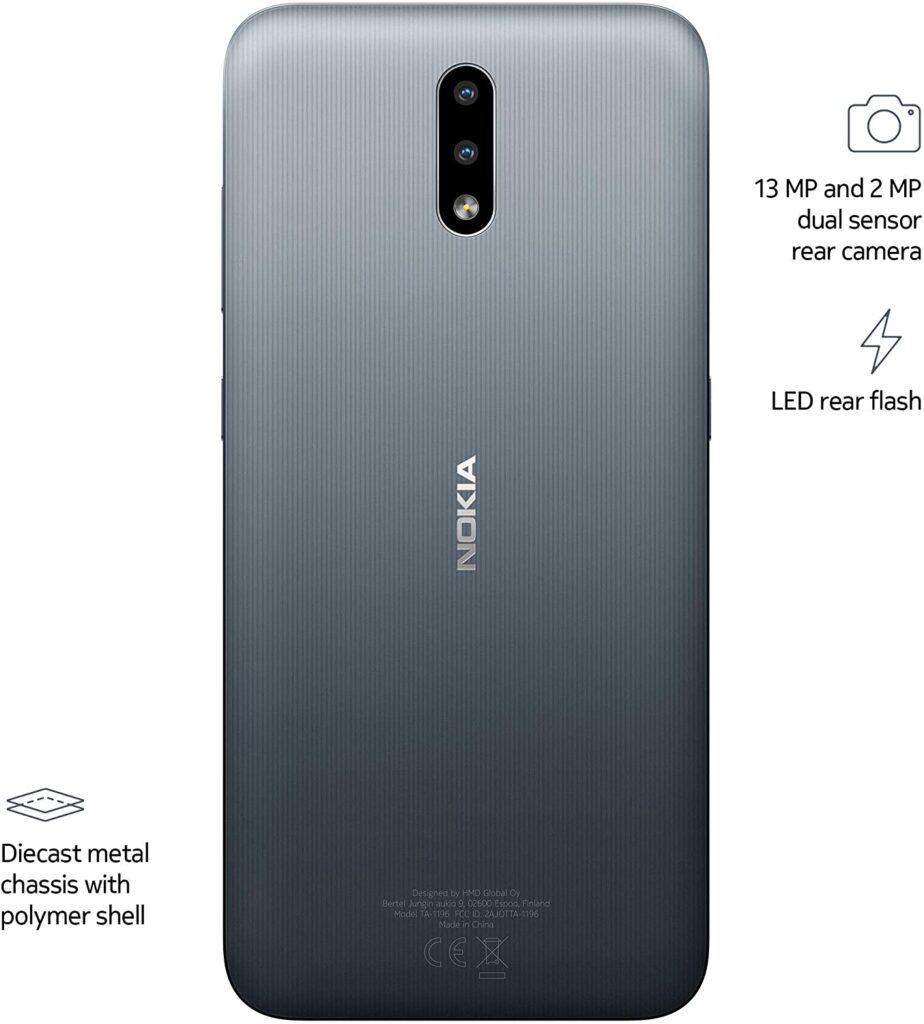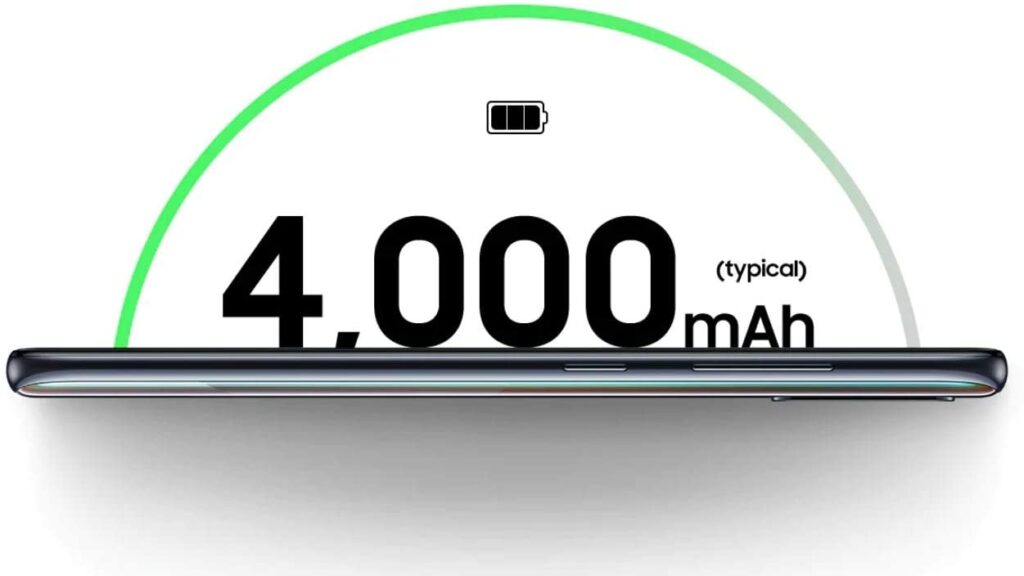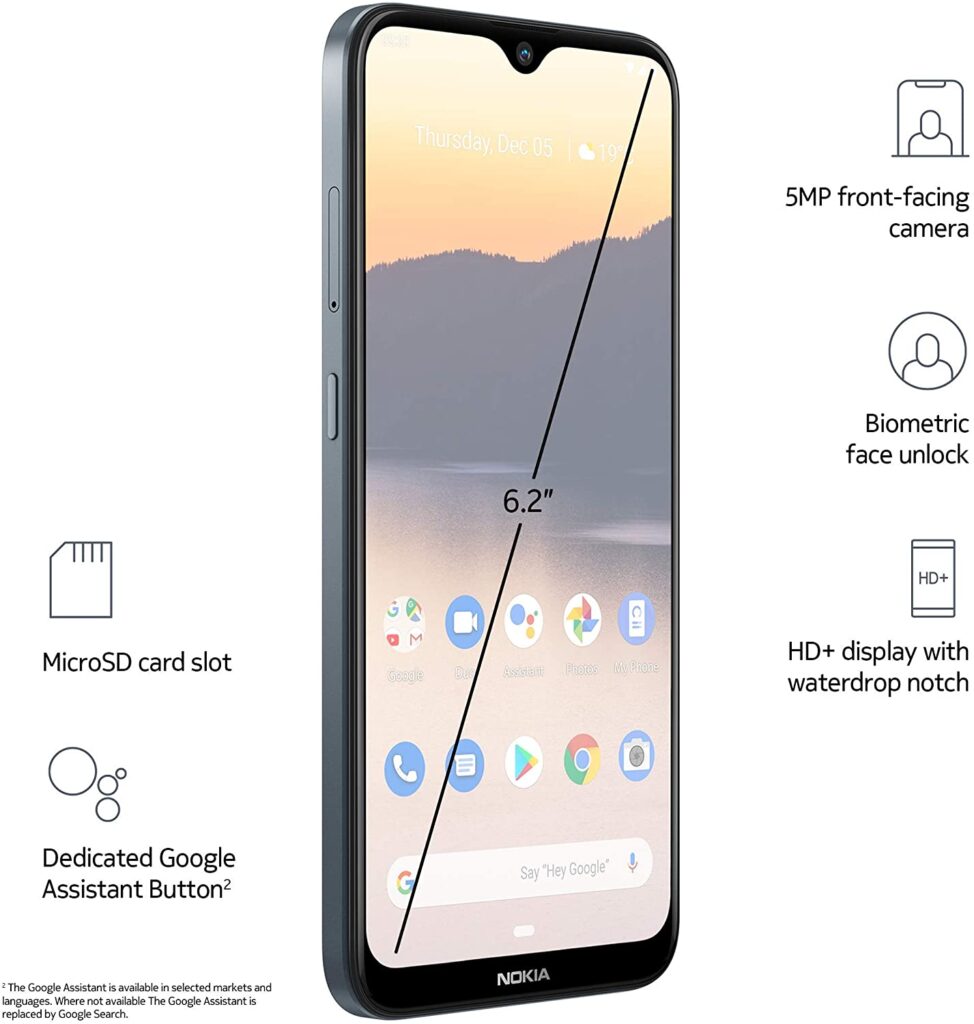The Nokia 2.3 and Galaxy A01 (Samsung) are entry-level mobile phones for those who don’t need a high-end technical sheet. The smartphones feature a dual-camera system and prices below $120 but differ in points such as system and battery. Check below a comparison of technical datasheets between the devices.
Nokia 2.3 vs Galaxy A01
| Specifications | Nokia 2.3 | Galaxy A01 |
|---|---|---|
| Launch | May 2020 | April 2020 |
| Current price | from $89.99 | from 113.99 |
| Screen | 6.2 inches | 5.7 inches |
| Screen resolution | HD+ (1520 x 720 pixels) | HD+ (1520 x 720 pixels) |
| Processor | MediaTek Helio A22 (quad-core up to 2 GHz) | Snapadragon 439 (octa-core up to 2 GHz) |
| RAM | 2GB | 2GB |
| Storage | 32GB | 32GB |
| Memory card | MicroSD up to 512GB | MicroSD up to 512GB |
| Main camera | Dual Camera: 13 and 2MP | Dual Camera: 13 and 2MP |
| Front Camera | 5MP | 5MP |
| Operational system | Android 9 (Pie) (Upgradeable to Android 10) | Android 10 |
| Battery | 4,000mAh | 3000mAh |
| Dimensions and weight | 157.7 x 75.4 x 8.7 mm; 189 grams | 146.2 x 70.9 x 8.3 mm; 149 grams |
| Colors | Black, Gold, and Green | Black, Blue, and Red |
Screen and Design

The Galaxy A01 is smaller, with a 5.7-inch display compared to the 6.2-inch screen used by Nokia. As the resolution is the same 1520 x 720 pixels in both models, Nokia’s phone may end up showing images with a little less definition, as it has a panel with lower pixel density: 271 PPI (pixels per inch) against 294 PPI from Samsung.
Despite the dimensions, both devices offer a similar design. Both feature a selfie camera housed in a small centralized notch. Intended for the entry market, both smartphones are built in a combination of glass and plastic.
The Galaxy A01 is found in black, red, and blue. The Nokia phone has options in black, gold, and green.
Cameras

The two mobile phones followed very similar strategies in the cameras, which are dual in both phones. To begin with, the main sensor is 13 Megapixels in resolution and is attached to an f/2.2 aperture lens in both phones. There are also secondary depth sensors with 2MP resolution in both phones.
This combination is simple but allows the phones to offer more advanced photography features such as better quality zoom and effects like portrait mode. The Nokia phone promises enhancements through artificial intelligence, while the Galaxy has access to similar technologies from Samsung.
In the selfies, similarities continue between Galaxy A01 and Nokia 2.3, which use a 5MP resolution sensor. The only difference here is the lens, which has an f/2.4 aperture in the Nokia and f/2.2 used by Samsung.
Performance and Storage

Both smartphones come with more basic hardware. The Galaxy A01 features Qualcomm’s Snapdragon 439 octa-core processor capable of reaching 2 GHz speed. On the Nokia side, the processor is an Helio A22, developed by MediaTek. The CPU here is four-core, instead of the eight found in Samsung and records speeds up to 2 GHz. The presence of twice as many cores in Galaxy can give a performance advantage in more demanding applications.
These add up to 2GB of RAM, low capacity for current standards, and which may indicate limitations in leaving apps open in the background.
Similarities persist in the data storage capacity of up to 32GB in both models, complemented by microSD support of up to 512 GB of capacity in both phones.
Battery

Nokia has an advantage in terms of battery because it provides a component of higher capacity: 4,000mAh against 3,000mAh of the component used by Samsung. The South Korean company does not disclose data and estimates regarding autonomy time.
Nokia indicates that the battery allows the device to be in operation for up to two days away from the outlet.
Android Version

A significant difference between the two cell phones is in the system. Nokia offers 2.3 with Android One, an initiative that ensures that the mobile phone receives a system closer to Google’s standard and speeds up the process of updates. Nokia 2.3 comes with the Android 9 (Pie) factory, but it is already confirmed that it is ready for Android 10.
The Galaxy A01 has the conventional Android 10 with One UI 2.0 interface, from Samsung. On the one hand, this guarantees a user experience close to the one the user would find on more expensive devices of the company. However, Samsung’s customized Android can mean a more restricted period of support and updates.
Additional Features

Both cell phones have facial recognition technology as the only form of biometrics and have no fingerprint sensor. Besides this form of authentication, both models support operating system features such as PIN, password, and on-screen standards.
In terms of connectivity, both are more basic cellular phones, with Wi-Fi 4 (802.11 b/g/n). Bluetooth, the Samsung phone comes with version 4.2 of the protocol, while Nokia uses Bluetooth 5.0, which is more efficient and recommended for those who want to use a wireless headset, for example.
Both phones also offer headphone output, support for the use of two phone lines at the same time, and a port for loading and transferring data micro USB type.
Price and Availability
Nokia 2.3 was launched in May, and it is seen figures that start from $89.99 on Amazon at the moment.
Galaxy A01 is also available in the market. It already had a reduction in its value and can be found for $113.99 on Amazon.
- Buy Nokia 2.3
- Buy Galaxy A01
This post may contain affiliate links, which means that I may receive a commission if you make a purchase using these links. As an Amazon Associate, I earn from qualifying purchases.

